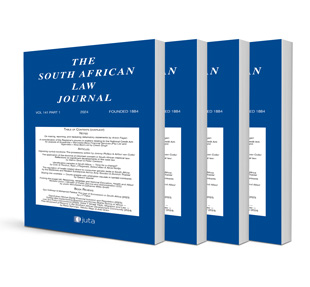
ARTICLE
Realizing South Africa’s contribution to the global biodiversity framework’s area-based targets — The potential impact of new screening trends linked to strategic infrastructure projects, corridors and zones
Author: Alexander Paterson
ISSN: 1996-2177
Affiliations: Professor, Institute of Marine and Environmental Law, University of Cape Town
Source: South African Law Journal, Volume 141 Issue 3, p. 526-553
https://doi.org/10.47348/SALJ/v141/i3a6
Abstract
South Africa supported the adoption of the Convention on Biological Diversity’s Kunming-Montreal Global Biodiversity Framework in December 2022. Area-based conservation measures form the focus of its Target 3, which calls on countries to ensure that at least 30 per cent of their territory of high biodiversity value is effectively conserved and managed in protected areas and other effective area-based conservation measures by 2030. South Africa will need to more than triple its current land coverage within these areas in the next six years to achieve this target, and it has mapped priority focus areas for expansion to enable it to do so. The government is concurrently seeking to facilitate the roll-out of certain strategic infrastructure projects (‘SIPs’) linked to renewable energy, electricity grid and gas pipeline infrastructure within certain identified strategic infrastructure corridors and zones. Heavy reliance is placed on environmental impact assessment (‘EIA’) screening processes to subject activities linked to these SIPs undertaken in these corridors and zones to fast-track EIA approval processes or exclusions. Overlaying the maps depicting land of high biodiversity value, which is vital for achieving Target 3, with those outlining the strategic infrastructure corridors and zones, highlights potential conflict. This article critically analyses whether the new screening processes and associated tweaks to the general EIA and approval process linked to the SIPs have the potential to manage and mitigate these potential conflicts. The analysis highlights several challenges linked both to their foundation (including reliance on strategic environmental assessments and screening tools) and the array of procedural safeguards embedded within them. Cumulatively, these challenges hold the potential to undermine South Africa’s efforts to realize Target 3.